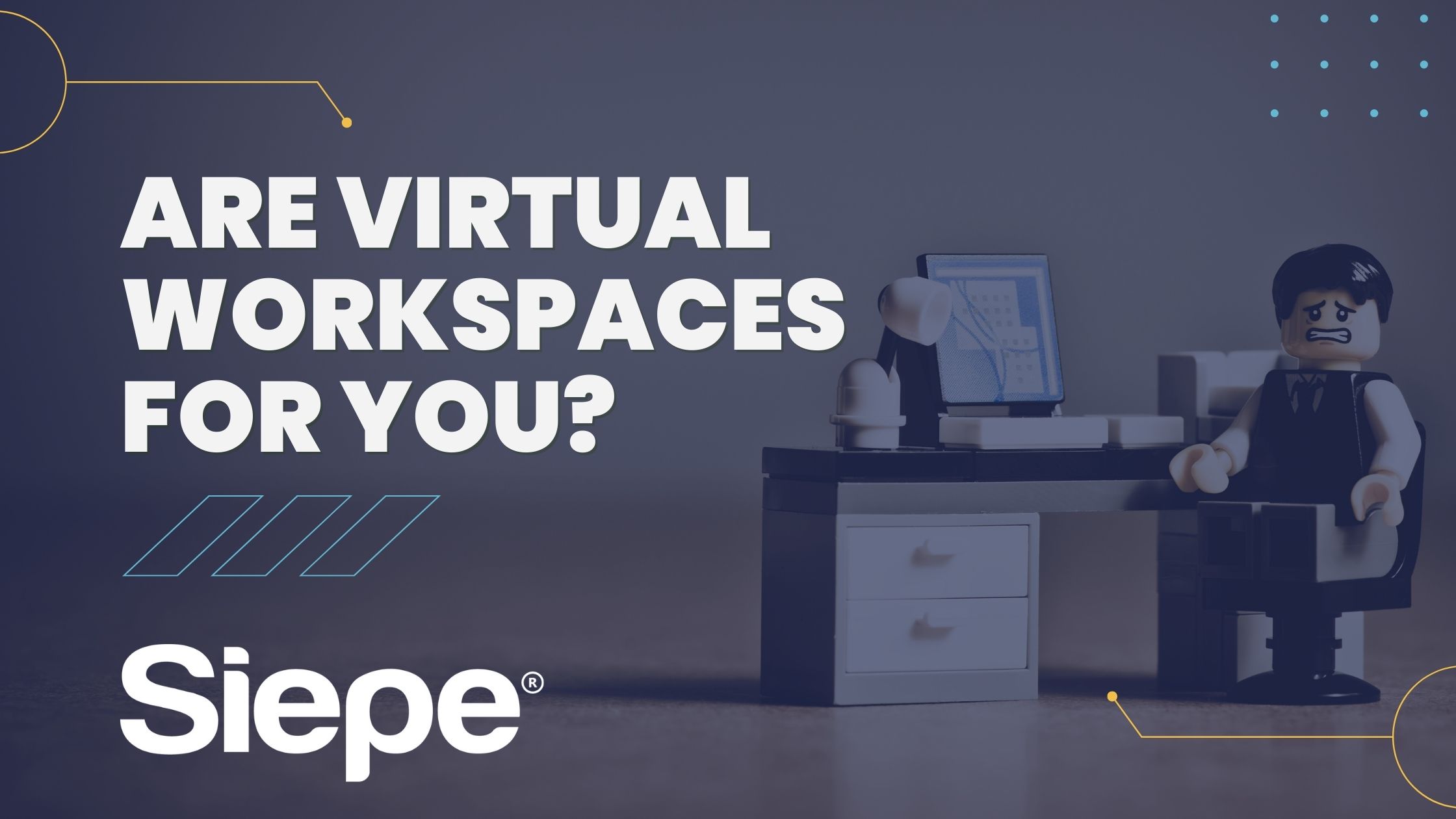The adoption and trust of technology in the world of finance is accelerating. Businesses have learned that most functions can be achieved virtually, with many embracing remote or hybrid office models. However, without the correct systems and frameworks in place, some may fall victim to various operational and security risks. This is why firms have to be very cautious about how they are handling data and workflows amidst these shifting working dynamics.
In previous blogs, we’ve explored:
- How financial institutions have become a top target for cybercriminals
- Solutions for common challenges associated with maintaining business operations during this period of rapid digital transformation
One area of technology that has grown in popularity among financial firms is virtual workspaces. As the name suggests, these are working environments where users digitally connect via the Cloud – regardless of their location. They can be used as collaborative hubs that enable businesses to continue their operations remotely while providing a multitude of benefits – the first being security and data loss prevention.
The benefits of virtual workspaces
When deploying virtual workspaces, all data is encrypted in the Cloud. As a result, workflows do not need additional firewalls as they come with multi-factor authentication or Single Sign-On (SSO) security measures, preventing outside users from accessing the data. The data stored is also backed up, enabling businesses to recover from an unplanned event or data corruption.
Additionally, with outsourcing becoming increasingly popular among financial firms, virtual workspaces can give peace of mind if you are unsure about another firm’s security practices. This is because it sits in its own environment and can be cut off from other parts of the business, restricting access to areas that may be infiltrated or targeted by cyberattacks.
Secondly, virtual workspaces are vital for business continuity and disaster recovery (BCDR). They can be spun up quickly (within less than an hour) and across regions as data can be synced between systems. This is because moving data in a virtual workspace is simple as anyone who can access the workspace can have it at their fingertips, even when signing in from a new device. Conversely, virtual desktops, which only expand a computer’s desktop environment beyond the physical limits of the screen are self-contained, and there is no way for that data to get from that environment to another.
With on-premise environments, there are many risks that may seem unlikely and minor but could have significant implications – for example, a power outage. On the other hand, workspaces have no dependencies on physical infrastructure, allowing businesses to continue operating as usual. Virtual workspace environments work with any other nodes and any resource helping to drive mapping of data and files servers in the same place with no latency issues. What’s more, they are available on-demand and you pay for them on an as-needed basis.
Thirdly, there are no hardware limitations. Over the past few years, we’ve seen huge global supply chain issues with the manufacturing of consumer electronics. Given the high demand, these challenges are unlikely to be fixed anytime soon. A virtual workspace can help manage the situation. High-quality central processing units (CPUs) aren’t necessary to use workspaces, as you aren’t capped on how much processing power you can get. Even with a relatively old computer, you can simply log in to your workspace and gain access to almost unlimited resources, without requiring the purchase of equipment upgrades to increase processing power.
Beth Anisman, Co-Founder and Managing Partner of a leading global law firm focusing on technology, data and privacy, shared her thoughts about moving to a virtual desktop environment:
“We were looking for a desktop solution that could provide scalability on a global basis, enhanced access and security controls and resiliency – while also allowing for streamlined administration and rapid deployments. We have partnered with Siepe for over seven years for all of our technology needs, and they guided us skillfully through our migration to this dynamic solution.”
Limitations
The main limitation with virtual workspaces is that employees need to be trained on how to use and navigate the system. While there isn’t a steep learning curve, we all have our own individual preferences for aesthetics and how a system works. It may take time to adjust, but like any new software release, it can be easily overcome as users get more comfortable and familiar with how it’s used.
The effectiveness of virtual workspaces is also dependent on a stable, reliable wifi connection. While global wifi connectivity is far from perfect, it generally shouldn’t be a problem for most businesses.
So are virtual workspaces worth it for you?
Every business has its own structure and unique requirements to consider. At Siepe, it makes perfect sense to use virtual workspaces because we hire interns, engage with contractors, and operate with a dispersed workforce used for remote onboarding.
To find out more about virtual workspaces and whether they fit your business needs, contact us today.

